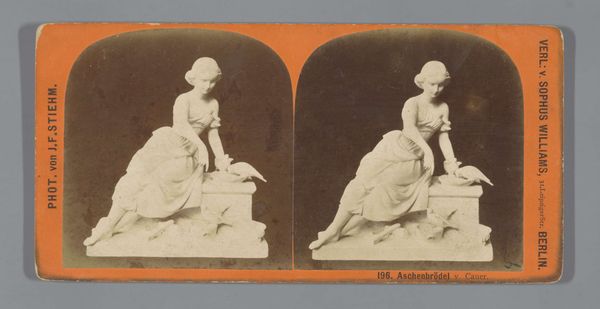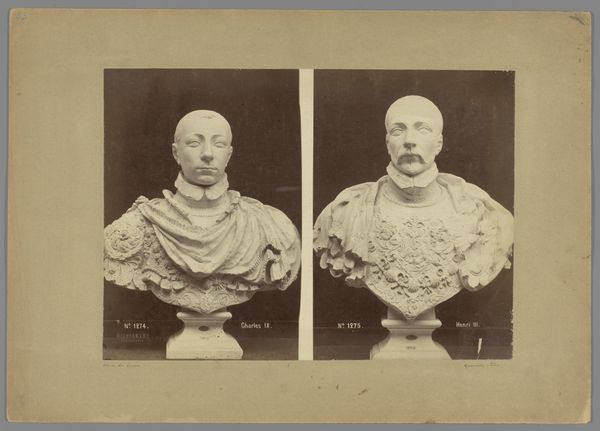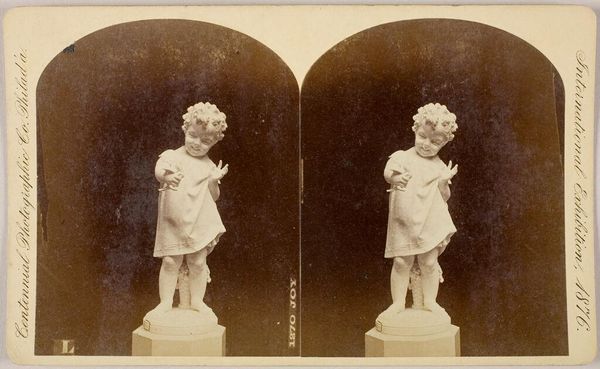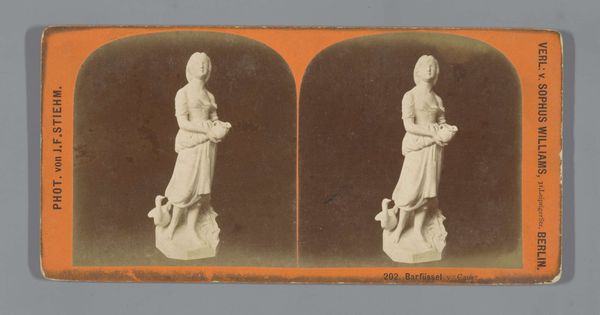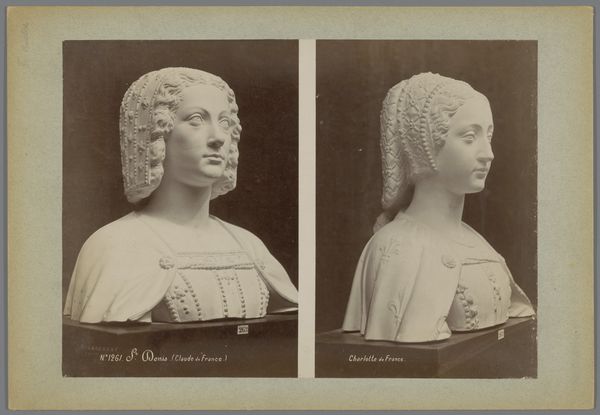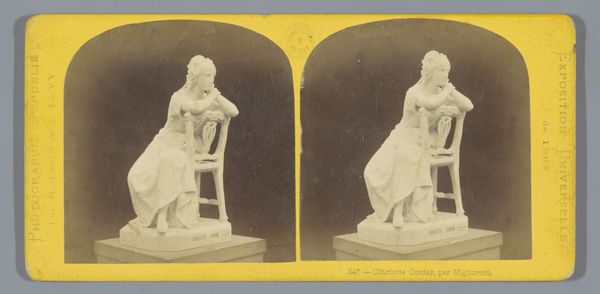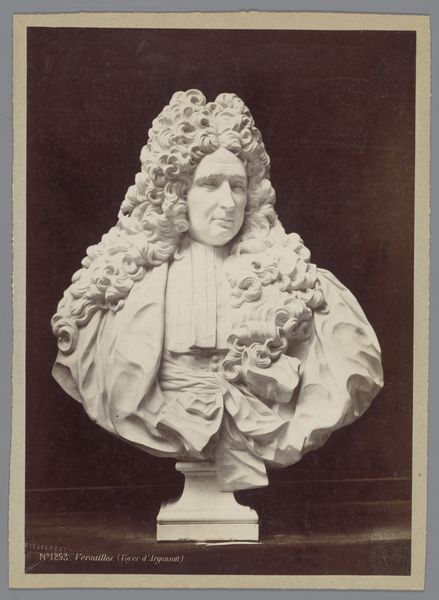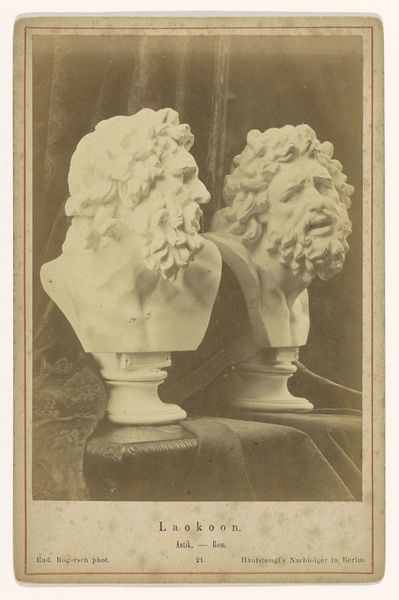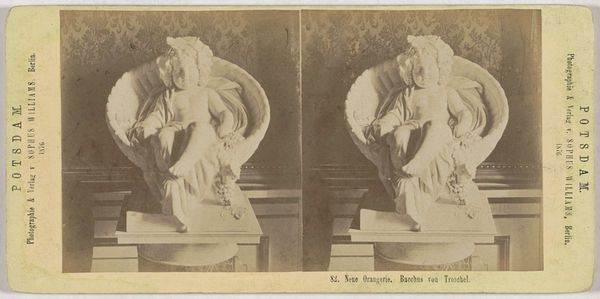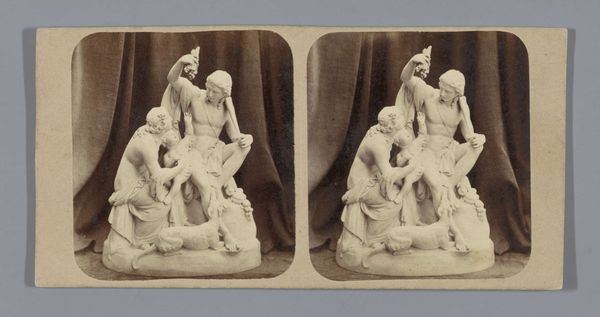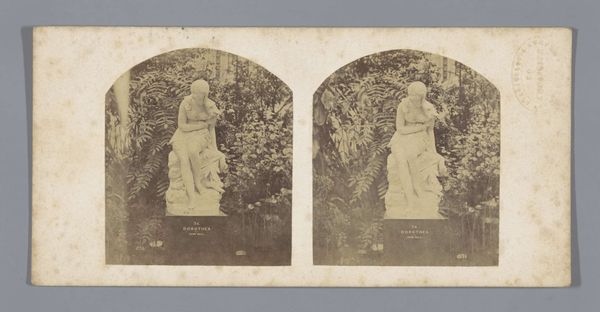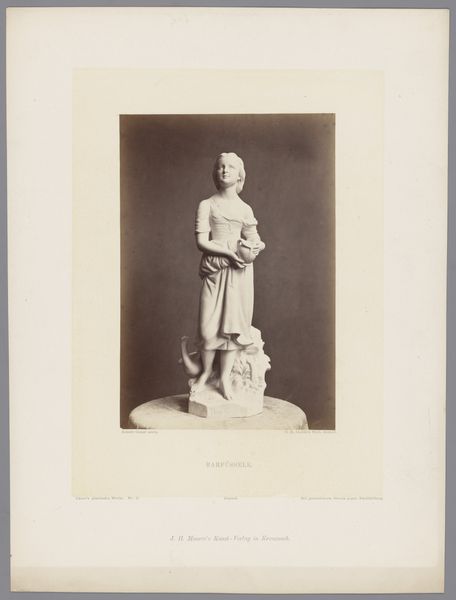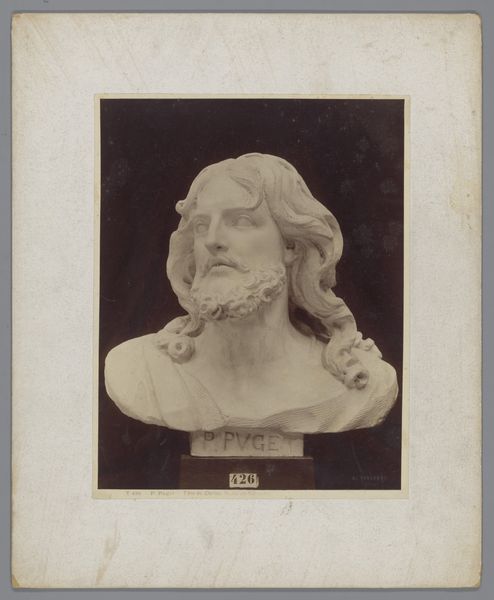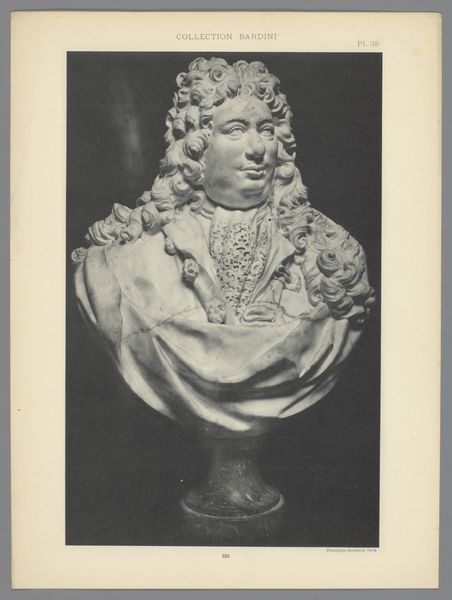
sculpture, wood
portrait
sculpture
sculpture
19th century
wood
realism
Dimensions: height 85 mm, width 175 mm
Copyright: Rijks Museum: Open Domain
Curator: Looking at this captivating image titled "Sculpture of a Laughing Child's Face after Jtasse," created in 1876, one can immediately perceive the era's fascination with capturing genuine human emotions through art. Editor: It's interesting; my immediate reaction is that the child's smile feels very intentional, almost staged, when looking at the medium used. The materiality of wood presents this solid and static nature, that makes the fleeting quality of the laughter presented feels rather heavy somehow. Curator: Absolutely. This sculpture reflects a broader cultural interest in Realism, aiming to represent subjects as accurately as possible. The decision to immortalize such a fleeting expression speaks volumes about 19th-century society's values—cherishing innocence and capturing moments of unbridled joy for posterity. Editor: Right. Using wood as a sculptural medium situates it firmly within a world of craft and labor. Think about the deliberate carving required, the physical exertion. The laughter, usually so spontaneous, is carefully manufactured, almost like a commodity. It prompts questions about how social class played into crafting and buying art in 1876. Curator: Exactly, because the socio-political context reveals the dynamic interplay between artistic creation and cultural perception. These sculptures could be displayed in middle-class homes, symbolizing progress and the embrace of the ideals around realism promoted within the sphere of art, making this an item of artistic consumption within social and economic constructs of the period. Editor: It's as if this object is trying to materialize what the essence of a child could be through this artistic means, making it an interesting commentary of what childhood means to the Western society. Curator: Precisely! This wooden sculpture not only encapsulates a fleeting moment, it freezes values within that very expression, so to say, solidifying these societal ideals. Editor: The work leaves me to contemplate what we lose when we try to make emotions something material and everlasting through processes like this.
Comments
No comments
Be the first to comment and join the conversation on the ultimate creative platform.
